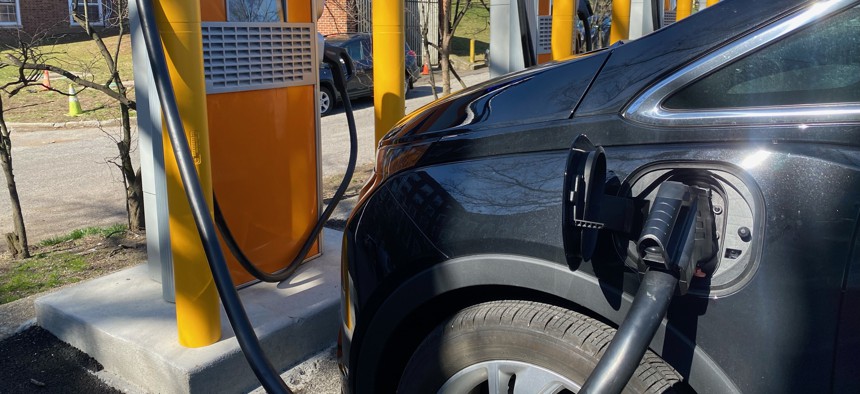Shovel Ready vs. Shovel Worthy

Lindsey Nicholson/UCG/Universal Images Group via Getty Images

Connecting state and local government leaders
COMMENTARY | As state and local governments receive an influx of federal infrastructure funding, it is imperative that they think critically about future needs.
An opportunity has emerged for state and local governments to deliver much-needed infrastructure improvements, support the energy transition and improve sustainability. This opportunity is largely the result of an influx of federal funding, which now puts the onus on public officials to think critically about which projects they should prioritize and pursue.
The opportunity to better the lives of constituents is great, as is the need for infrastructure improvement across the board. So it is imperative that funding recipients look beyond shovel-ready projects and focus as well on shovel-worthy ones.
What is the difference between the two? Shovel-ready projects have largely gone through necessary planning and permitting so they can be delivered quickly, whereas shovel-worthy initiatives are often next-generation projects that may have significant capital needs but can also have a transformational impact if the funding can be found to deliver them.
As state and local government leaders assess which projects are a priority for them and their constituents, consider the following three factors when identifying shovel-worthy projects:
Focus on priority areas through clear asset strategies. In year one of the Infrastructure Investment and Jobs Act, grant recipients understandably focused efforts on urgent repairs and improvements to existing assets, including bridge replacements, rehabilitation, preservation, and much-needed repairs to the condition of highway and public transport systems. However, there have been relatively few next-generation projects.
Now, governments should focus their attention on clear asset strategies to establish priorities for next-generation asset classes that support broader economic, societal and environmental goals. Next-generation assets could include renewable energy and electric vehicle infrastructure, broadband, urban transit that improves equitable access to critical services, and more. The strategies should identify risks and mitigating actions.
Prioritize workforce development. In order for federal funding to deliver the transformational impact intended, backfilling essential infrastructure talent should be a priority focus for the sector. The current workforce is insufficient to meet the demands of the infrastructure law, the Inflation Reduction Act and the CHIPS and Science Act. Currently, early career workers account for just 11 percent of the infrastructure workforce. In addition, people of color and women account for significantly lower percentages compared to other industries.
The industry must attract the workforce for the infrastructure business of tomorrow and this does not only apply to construction workers. States and cities will need engineering, manufacturing and technology talent, as well as experts in planning and permitting. Plans should include collaboration between owners, contractors, trade associations and educational institutions, and focus on improving industry attractiveness, diversity and retention.
Utilize a crossagency approach. When it comes to implementing these projects efficiently and effectively, connectivity across departments is essential. As leaders evaluate which projects should be greenlit, a crossagency framework should be put in place in order to deliver better outcomes for constituents.
One example is laying broadband at the same time lanes are added to a highway to reduce disruption and save money. A key first step for this method is appointing a central figure to coordinate efforts between departments and assist with communication and alignment. While this integrated approach to improving infrastructure systems is not without obstacles, it will be beneficial in the long run.
Whether it’s reducing emissions, improving climate resilience or creating greater access to critical services such as education, housing and health care, infrastructure is an essential component. State and local leaders have a multitude of decisions to make but using these steps as a framework is an important first step in their journey.
Andrew Garbutt is a Principal and Head of Infrastructure & Projects Advisory at KPMG U.S. The views expressed are those of the authors alone and do not necessarily represent those of KPMG LLP.

NEXT STORY: Finding the right drone for the job




